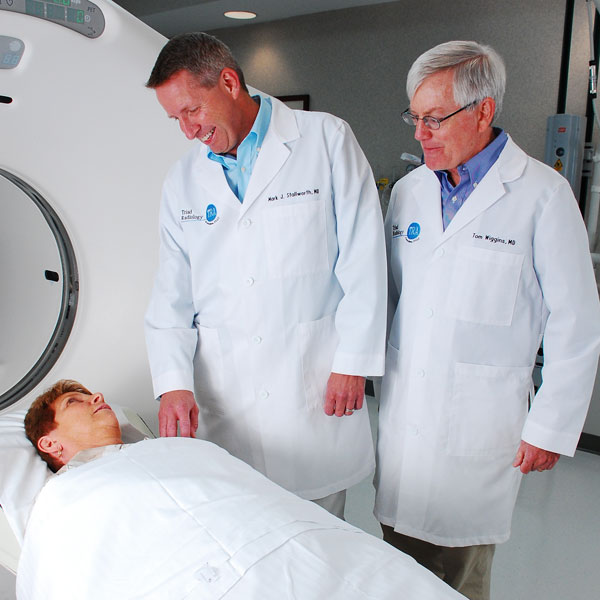CT Scan (Computed Tomography)
Computed Tomography, more commonly known as a CT or CAT scan, is a diagnostic imaging test that uses a combination of X-rays and computer technology to create cross-sectional images (horizontal and vertical) of the body. Once taken, these individual images, called slices, are sent to a computer to be reconstructed into a three-dimensional (3D) view, showing parts of the body including bone, muscle, fat, blood vessels, and organs.
Because CT scans are so detailed, physicians are often better able to diagnose conditions that may not have been detected with other imaging methods, such as X-ray or ultrasound. CT scans are commonly used to:
- Examine the chest, abdomen, and pelvis because it provides detailed views of all types of tissue
- Identify traumatic injuries to internal organs
- Examine the brain
- Help guide biopsies and assist with the planning of surgeries and/or radiation treatments
- Diagnose a variety of cancers
- Detect and diagnose vascular diseases that can lead to stroke, kidney failure, and even death
- Diagnose and treat joint, spinal, and other skeletal conditions
- Measure bone mineral density for the detection of osteoporosis
How To Prepare for a CT Scan
Preparation for a CT scan will depend on which part of your body is being scanned. You may be asked to:
- Remove articles of clothing and wear a hospital gown
- Take off metal objects (i.e. belts, jewelry, eyeglasses) that could interfere with the images
- Avoid eating or drinking (fast) prior to scanning
Some patients may also need to have a special dye, called a contrast material, administered to help highlight the area of the body that is being examined. The contrast material temporarily changes the way x-rays interact with the body, making it easier for the radiologist to distinguish between normal and abnormal conditions. Contrast materials can be given by mouth, by injection, or by enema.
Before undergoing any medical imaging, it is important to discuss the risks and benefits of the procedure with your physician.
What is a CT Scan like?
CT scans are done on an outpatient basis either at a hospital or an outpatient facility. The whole procedure is quick and painless, typically lasting no more than 30 minutes.
Patients lie on a narrow, motorized table that slides into the opening of a tunnel. In some cases, straps and/or pillows may be needed to help you remain still. The X-ray tube will rotate around you capturing several images of your body.
A technologist will be close by monitoring you. You will be able to communicate with them via intercom, if needed.
After the exam, the radiologist will study the results with your doctor. Your doctor will then consult with you.
Triad Radiology offers CT scanning at a variety of locations, including hospitals, imaging centers, and clinics. Contact us if you want to learn more or schedule an appointment.



